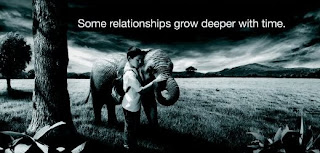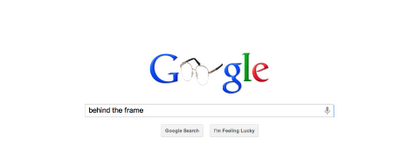Disappearing Screen Space: Products Facing Identity Crisis?
Recently, I was trying to recall an advertisement in which a boy and an elephant share a relationship that 'grows deeper with time'. But, all I could remember was the story. What was the product? A network connection? Well, it was IDBI Bank's latest campaign.
The screen space shared by products in advertisements has tremendously decreased. Advertisements, these days, have an abstract theme. They first create a need by emotionally connecting with the audience, and then introduce the product. They aim to reach the value-minded consumer with innovative and conceptual advertising executions. Remember the ad showing a number of dolls resembling women in different professions? How many of us could guess that the ad was about a hair product (Livon)?

The recent Cadbury Eyebrows Campaign (2009) launched in Britain is a fine example of the trend in the advertising industry we are talking about. The list, however, is not exhaustive. Nike's 'Failure' Campaign, Britania's gulaal ad, Center Shock's crazy hairstyle ad- All these commercials have a common trend of product showing up in the end.
Wait! Aren't some products (Airtel/Vodafone) have always been advertised this way? Well, here's the catch. Being intangible products, the newest trend with them is that even the jingle is missing till the product makes entry in the final scene. The ZooZoo ads, not showing any glimpse of Vodafone till the end, say it all.
One important point here is that this trend is not rare now. Also, it's not a sudden occurrence for all the brands. Among FMCG companies, Cadbury and Coke are among the recent followers. This is evident in change from Thanda Matlab Coca cola campaign (where Coke was in the frame throughout) to latest Library Commercial of Coke. If we go back into the history of commercials, the difference between Fevicol's old campaign featuring Raj Kumar Hirani (Zor lagage Haisha) and its latest Moustache campaign shows how the focus from the product has shifted to an idea/theme. An ad showing a young boy trying to cheer up his teacher, who was upset as her dog died (Surf Excel campaign- Daag Ache Hain), is not the usual surf ad where a housewife carries detergent all through the ad to show its whitening effect.

If we analyze the trend, we see that advertisements first create curiosity about the product by using a storyline which is emotionally appealing, and then product is brought into the frame to connect with that emotion. The plot is intelligently designed for the hero's impressive entry (the product). Remember Shahrukh and Tisca Chopra bringing an orphan girl home, who settles into the family only with Dish TV's experience?
The question raised in the beginning regarding the recall value of such advertisements can be answered in two ways. First, if psychologically analyzed, the emotional participation in watching a commercial is found to be positively related to the attention paid by the audience. This can mean ads that involve audience emotionally are better remembered. On the other hand, there is an equal possibility that the audience may not be able to relate the storyline with the product introduced in the end. Then, this would mean that the captivating script would steal the limelight and the product will face identity crisis. Isn't it hard to distinguish between campaigns of HDFC Mutual Funds or SBI Mutual Funds since both have storylines around money saving schemes? Both fail to focus on a unique attribute of their product in the storyline.
However, some advertisements can have a good recall value because of some other factors as well like uniqueness (Zoozoo campaign) or strong celebrity image association (Dish TV/Airtel/Lays), but some, unfortunately, fail miserably by turning merely into a cherished tale



Comments
In my opinion there are several reasons for this - and its not because products are facing an identity crisis - quite the opposite - they are creating a whole new one.
The point of the ad/brand is to create customer loyalty.
People in general are more loyal to things they have an emotional connect with - a great example of that would be the new Joy is BMW campaign running in India, or the Music Gets you Talking campaign by Nokia.
It is because of the need to have this connect that more and more ads are weaving a story to make the emotional connect and thus ensure loyalty even when a comparative product comes along.
A great example of this would be the Airtel ads.
Airtel started its emotional connect with the black and white ad series with the tag - express yourself, by showing situations which were defining moments in people's lives.
Same continues today with the new sharman joshi ads where they harp the virtues of how you can talk your way into getting stuff done - whether it is handling a difficult prof, the girlfriend's brother or even asking dad for more money - all things that their college TG can relate with.
W.r.t Vodafone's zoo zoo campaign, I'd like to see some sales numbers before and after the ads. I am not sure the impact was that high.
Don't get me wrong, zoo zoo is a funny ad series but I just dont see how it connects to the brand. I have an emotional connect with the zoo zoos but not so with vodafone.
By 'disappearing screen space', I mean that the ad is not showing the physical/virtual product but some story/narrative around it (unlike earlier when say, Surf Excel ads had 'surf excel' present in the entire 1 minute video). I agree that the story is to create an emotional connect but how many ads have been successful in that, was my point.
I also made a point that if an ad (read narrative) manages to connect with the consumer (and also connect the narrative with the product in the end), only then it can have a good recall value. Otherwise, people will remember an elephant and a boy story in an ad but not the product (IDBI).
About vodafone, I called it an exception for 'recall value'. Nobody can imagine that at the end of a zoozoo ad, they will see Vodafone's logo. (The entire ad doesn't show Vodafone - disappearing screen space of Vodafone). Also, as you said, zoozoo's don't relate strongly to 'vodafone' logo in the end but people don't mistake zoozoo ads for any telecom service. Everyone knows its Vodafone. Why? I feel it was because of the uniqueness of the ad, and the publicity it had. (Thats why an exception)
I am not sure about the numbers for vodafone either, but my point was in terms of recall value.
PS: But at the end, these are my opinions, and you are welcome to express yours. That is what blogging is all about :)